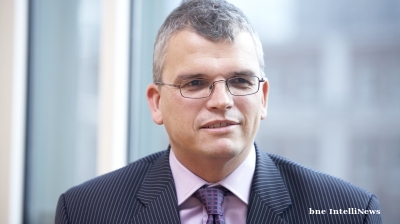Two days ago the Armed Forces of Ukraine (AFU) launched a surprise attack on the Russian region of Kursk and rapidly captured an estimated 350 square kilometres of Russian territory – the biggest territorial gain of the war since the spectacular Kharkiv offensive in 2022.
It’s Ukraine’s first offensive to cross into Russian territory and seems to have caught the Russian forces off guard. However, what is the goal of the offensive? Analysts say that remains unclear and the Battle for Kursk could either be a brilliant masterstroke that could improve Kyiv’s negotiating position in mooted peace talks, or a strategic mistake that draws off badly needed resources to defend against the ongoing Russian assault along the whole front line.

The possible goals that analysts have suggested include:
Slow or kill Russian momentum in its offensives which have lasted for the duration of 2024;
to shift the narrative on the war to one more positive for Ukraine and counter Russian misinformation about their ‘inevitable victory’ in Ukraine;
to capture a key gas substation that supplies Europe with Russian gas that is still operational;
boost morale in the Ukrainian population after eight months of largely defensive operations and retreats; and
grab as much territory as possible in case Ukraine is forced into some kind of negotiated settlement at the end of 2024.
Surprise attack
Ukrainian troops, supported by Russian volunteers, launched a surprise offensive into Russia’s Kursk region, penetrating 20-25 km deep inside Russian territory over two days, according to multiple reports. The unexpected incursion has led to a state of emergency being declared in the border areas of Kursk Oblast and panic in Moscow as it scrambles to respond.
Alexei Smirnov, acting governor of Kursk Oblast, raised the alarm on August 6, saying: “a complicated operational situation in the border areas” in a social media post, before declaring a state of emergency as highly mobile AFU troops sliced through towns and villages largely unopposed. Smirnov said that Ukrainian forces rapidly took the Sudzha and Korenevo districts near the border.
Large-scale assault
Retired Army Major General Mick Ryan, now a senior fellow for military studies at the Lowy Institute, commented on the operation, saying it has been large-scale and very effective.
"It appears that yet again the Ukrainians have surprised Russia, and observers in the west, with their latest operation," Ryan said on social media. "Over the past 72 hours we have watched as Ukraine has launched a significant cross-border assault into Russia’s Kursk region."
The normally reliable Rybar Russian military blogger Telegram channel reports that several key towns such as Sudzha in the Kursk region have been captured by the AFU. Kyiv has yet to comment on the operation or confirm any of the reports.
Rybar reports other gains, including: in the northwestern sector, the enemy reached the outskirts of Leonidovka along the Rylsk-Sudzha highway; advances from the Nikolayevo-Daryino-Daryino-Nizhny Klin line, establishing control over Obukhovka, Pokrovsky, Tolsty Lug and Lyubimovka; and Ukrainian formations continue to strike throughout the Kursk region. The Ukrainian command continues to amass forces in the Yunakivska rural community in the Sumy region. Concentrations of the AFU are also recorded in Yunakovka itself, as well as in the village of Kiyanitsa, located to the southwest.
If true, Ukraine has captured more land in the last 48hrs than in the entire summer counter-offensive last year. Russian military Telegram channels are in full panic mode – vibes of the August 2022 collapse in Kharkiv and Kherson.
Kyiv has committed significant resources to the assault, at the cost of depleting its defence elsewhere. The operation involves at least two experienced Ukrainian brigades, the 22nd Mechanised Brigade and the 82nd Air Assault Brigade, which includes soldiers trained in Germany that are among the AFU’s best units.
They have also been supplied with Western-supplied equipment, making them highly mobile, and are supported with significant air defence capabilities.
At least one Russian fighter jet has already been shot down and in a first, a Ukraine First Person View (FPV) drone took down an advanced Mi-28 military helicopter on August 7 on the second day of the operation.
The offensive has forced the Russian military to reconsider its force dispositions along the front line, which may be one of the goals, to ease the pressure on Ukraine’s defence.
"The Russians will have to respond, and even they do not have a bottomless pit of resources to do so," Ryan explained. He suggested that the Ukrainian objectives could include disrupting Russian momentum in their ongoing offensives and shifting the narrative of the war.
Boosting morale and grabbing some land
Since the disastrous six-month hiatus in US support at the start of this year when the US ran out of money for Ukraine, Russia has taken the offensive, starting with the fall of Avdiivka on February 17, and followed that with a massive missile barrage in March that has destroyed half of Ukraine’s power sector capacity. This has put Bankova (Ukraine’s equivalent of the Kremlin) on its back foot and is fuelling talk of possible ceasefire talks in November as the pressure mounts.
To lift the mood amongst the public, the operation may be intended to boost Ukrainian morale and secure territorial gains ahead of those potential negotiations. "A strategic objective for Ukraine might be to grab as much territory as possible in case Ukraine is forced into some kind of negotiated settlement," Ryan stated.
Russian President Vladimir Putin already offered a ceasefire deal on the eve of the failed Swiss peace summit held on June 16-17, but added the caveat that it would have to take “realities on the ground” into account, implying he has no intention of giving up territories already occupied or annexed by Russia. The Battle for Kursk could be an attempt to change that calculus and win Bankova a territorial card to play in the upcoming negotiations to end the fighting.
If that is the plan, then it is a big gamble. Russia is expected to pour significant resources into re-taking the lost territory, as Putin clearly doesn’t want to hand Ukrainian President Volodymyr Zelenskiy a trump card. And given that the AFU forces have already been struggling to hold off Russia’s forces on the eastern front, supporting units further away inside Russia’s territory with longer supply chains will be hard.
However, if all Bankova wants is a new territory card to play in the upcoming negotiations then the AFU only need to hold its gains in Kursk for two months. Zelenskiy has called for a second peace summit that will be held in November and to which both China and Russia will be invited, neither of which attended the Swiss peace summit.
Zelenskiy has been actively preparing for this summit, by first calling for a referendum to gain a popular mandate to possibly concede territory to Russia as part of the talks, and earlier this week the president said he hopes to bring the war to an end this year, his clearest commitment to date to starting real ceasefire negotiations and a retreat from his previous maximalist position that talks could not begin until all Russian troops had left Ukraine’s territory entirely, including the Crimea.
Gas pump
The AFU has also captured the Sudzha gas metering station in Russia that pumps gas through the Urengoy-Pomary-Uzhhord main gas pipeline to customers in the EU, primarily to Hungary, Slovakia and Austria. Nearly 50% of all Russian gas exports to the European Union flow through this station.


There was a second strand to the pipelines delivering gas to Europe through Sokhranivka and the Novopskov compressor station that transited 30mn cubic metres a day, but Ukraine’s natural gas company Naftogaz shut that down in May last year after the territory where it is located was captured by Russian forces.
It’s by far the largest conduit Russia has to the EU since Nord Stream was blown up, and the only gas passing from Russia to Europe – some 42mn cubic metres a day, or circa 15bn cubic metres a year, which earns Ukraine $1bn in transit fees – passes through the Sudzha gas metering station.
Gas prices jumped on the news of the Kursk assault to over $400 per thousand cubic metres, after they had been trading at post-war lows for most of the summer, despite reassurances from Russia's gas giant Gazprom that it would continue to supply Europe with gas via Ukraine, Reuters reports. The Ukrainian operator's data showed that the regular 41.6 mcm of gas are expected to be moved from Russia to Europe via Ukraine on August 8.
Some have speculated that Kyiv intends to turn the gas flow off, or at least threaten to do so, to improve its leverage with the EU. Hungary has been a vocal critic of the war and vetoed several aid packages to support Kyiv in its military struggle with Russia.
From this perspective, the Battle for Kursk could be part of a larger strategy to give Bankova more leverage over Brussels, and to follow on from the sanctions Ukraine recently imposed on the Russian company Lukoil that was sending Russian oil to the EU – to the same countries that receive the gas.
As bne IntelliNews reported, the oil transit sanctions appear to be more political than practical, as Naftogaz reports that the flow of oil to Hungary has not in fact been disrupted. The two Russian state-owned companies that also fill the pipeline, Rosneft and Tatneft, have simply increased their volumes to replace Lukoil’s share in the pipeline, some 40% of the total.
The fact that Ukraine chose to only sanction Lukoil, knowing full well that it would be simple for Rosneft and Tatneft to increase their volumes to cover the Lukoil shortfall, strongly suggests that the new sanctions, which came out of left field, were a demonstration to Brussels that Ukraine can unilaterally cut off oil supplies, and now gas supplies, to Central Europe on a whim. Just that threat will give Bankova some real leverage over Brussels, and Hungary in particular that has been lacking until now.
"There is an abundance of uncertainty at the early stage of this Ukrainian offensive," he said. "Not only are we unsure about just how far the Ukrainians have penetrated, but we are also unsure of the strategic and political objectives of this operation. There is much more to learn in the coming days."
Opinion

COMMENT: US-brokered Armenia-Azerbaijan peace deal exposes Russia’s strategic failures
The recent peace breakthrough between Armenia and Azerbaijan is a major diplomatic win for the United States and a setback for Russia, according to a new report published by the Atlantic Council.

COMMENT: Why Beijing will never take Taiwan
Xi Jinping needs to think again before he sends so many young Chinese men and women to their deaths on Taiwan, for if the PLA does one day dare to land, they will be buried here.

COMMENT: Ukraine’s coming financial storm
“A crisis is drawing ever closer. It will break in Ukraine, but it won’t begin on the frontlines, where the country’s battle-weary brigades continue to impose a brutal cost on the Russian invader," writes Timothy Ash of BlueBay Asset Management.

BEYOND THE BOSPORUS: Performance postponed. Hotly anticipated “CHP” trial pushed into October
Every Turk up and down the country has an opinion on what Erdogan is up to.




